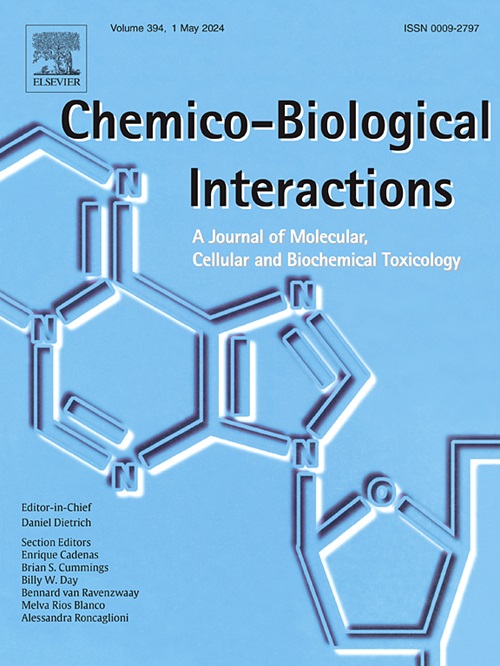3-Nitropropionic acid exposure inhibits embryo development by disrupting mitochondrial function and inducing oxidative stress
IF 4.7
2区 医学
Q1 BIOCHEMISTRY & MOLECULAR BIOLOGY
引用次数: 0
Abstract
3-Nitropropionic acid (3-NP) is a naturally occurring mycotoxin produced by various fungi and plants. Despite reports on its toxicity, the potential impact of 3-NP exposure on reproductive health remains elusive. To this end, we conducted an in vitro study to investigate the toxic effects of 3-NP on the developmental processes of mouse embryos. Our results suggested that exposure to 50 μM 3-NP resulted in significant pre-implantation developmental arrest , with most embryos arrested at the 2-cell stage, indicating disruption of normal development. Further analysis indicated that 3-NP exposure altered embryonic gene expression, disrupted zygotic genome activation and maternal gene degradation, and inhibited maternal-zygote transition. Moreover, it impaired mitochondrial dysfunction, causing dysfunctional cellular energy metabolism and elevated intracellular oxidative stress, culminating in increased DNA damage. Additionally, 3-NP exposure caused aberrant epigenetic modifications, particularly the upregulation of histone methylation levels, including elevated H3K27me3 and H3K9me3, which are strongly related to gene expression silencing. In summary, this study elucidates the in vitro toxic effects of 3-NP on mouse embryo development and highlights its potential adverse effects on female reproductive health.
3-硝基丙酸暴露通过破坏线粒体功能和诱导氧化应激抑制胚胎发育。
3-硝基丙酸(3-NP)是一种天然存在的真菌毒素,由多种真菌和植物产生。然而,3-NP暴露对生殖健康的潜在影响尚不清楚。为了解决这一空白,我们进行了一项体外研究,研究3-NP对小鼠胚胎发育过程的毒性作用。结果表明,暴露于50 μM - 3-NP的胚胎出现了明显的着床前发育阻滞。值得注意的是,大多数胚胎停滞在2细胞阶段,表明正常发育过程受到破坏。进一步分析表明,暴露于3-NP会改变胚胎基因表达,破坏合子基因组激活(ZGA)和母体基因降解(MGD),从而抑制母合子转化(MZT)。此外,3-NP暴露导致线粒体功能障碍,不仅损害细胞能量代谢,还引起大量细胞内氧化应激,导致DNA损伤增加。此外,我们观察到3-NP暴露导致胚胎表观遗传修饰的改变,特别是组蛋白甲基化水平的异常上调,包括H3K27me3和H3K9me3的升高,这与基因表达沉默密切相关。综上所述,本研究揭示了3-NP对小鼠胚胎发育功能的体外毒性作用,提示3-NP暴露可能对雌性生殖健康产生不良影响。
本文章由计算机程序翻译,如有差异,请以英文原文为准。
求助全文
约1分钟内获得全文
求助全文
来源期刊
CiteScore
7.70
自引率
3.90%
发文量
410
审稿时长
36 days
期刊介绍:
Chemico-Biological Interactions publishes research reports and review articles that examine the molecular, cellular, and/or biochemical basis of toxicologically relevant outcomes. Special emphasis is placed on toxicological mechanisms associated with interactions between chemicals and biological systems. Outcomes may include all traditional endpoints caused by synthetic or naturally occurring chemicals, both in vivo and in vitro. Endpoints of interest include, but are not limited to carcinogenesis, mutagenesis, respiratory toxicology, neurotoxicology, reproductive and developmental toxicology, and immunotoxicology.

 求助内容:
求助内容: 应助结果提醒方式:
应助结果提醒方式:


